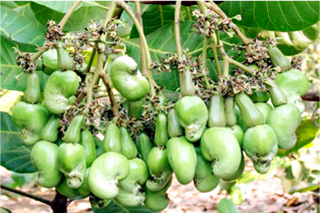Due to the importance of chitinolytic enzymes for insect, nematode and fungal growth, they are receiving attention concerning their development as biopesticides or chemical defense proteins in transgenic plants and as microbial biocontrol agents. Targeting chitin associated with the extracellular matrices or cell wall by insect chitinases may be an effective approach for controlling pest insects and pathogenic fungi.
The use of transgenic plants in agriculture provides many economic benefits, but it also raises concerns over the potential impact of transgenic plants on the environment. We here examined the impact of transgenic high-methionine soybean ZD91 on the arbuscular mycorrhizal (AM) fungal community structure in rhizosphere soil. Our investigations based on clone libraries were conducted in field trials at four growth stages of the crops each year from 2012 to 2013
We integrated single-molecule superresolution imaging with biochemical and genomic approaches to understand how the mismatch repair protein MutS efficiently identifies DNA mismatches during real time in living cells. We show that MutS molecules move fast, exploring the entire nucleoid, but can transition to a slow-moving population that is localized at the replisome even before a mismatch is produced.
The patterns of lateral branching, including tillers and inflorescence branches, determine grain yields of many cereals. In this study, we characterized a regulatory network composed of microRNAs and transcription factor that coordinately regulate vegetative (tiller) and reproductive (panicle) branching in rice. The findings hold tremendous promise for application in rice genetic improvement and may also have general implications for understanding branching regulation of grasses.
Whole genome duplication (WGD) has long been recognized as a major force in angiosperm evolution. DNA methylation variation is known to be involved in polyploidization events. We synthesized autotetraploid rice that may rule out disturbances from hybridization and investigated the scope and scale of DNA methylation variation in response to WGD in neopolyploid rice.
Squashes, pumpkins, and gourds belonging to the genus Cucurbita were domesticated on several occasions throughout the Americas, beginning around 10,000 years ago. The wild forms of these species are unpalatably bitter to humans and other extant mammals, but their seeds are present in mastodon dung deposits, demonstrating that they may have been dispersed by large-bodied herbivores undeterred by their bitterness. However, Cucurbita may have been poorly adapted to a landscape lacking these large dispersal partners.
Soybean [Glycine max (L.) Merrill] is an important crop worldwide. In this study, a Chinese local soybean cultivar, Hedou 12, was resequenced by next generation sequencing technology to develop INsertion/DELetion (INDEL) markers for genetic mapping. 49,276 INDEL polymorphisms and 242,059 single nucleotide polymorphisms were detected between Hedou 12 and the Williams 82 reference sequence.
Reprogramming incompletely occurs in most somatic cell nuclear transfer (SCNT) embryos, which results in misregulation of developmentally important genes and subsequent embryonic malfunction and lethality. Here we examined transcriptome profiles in single bovine blastocysts derived by in vitro fertilization (IVF) and SCNT. Different types of donor cells, cumulus cell and ear-skin fibroblast, were used to derive cSCNT and fSCNT blastocysts, respectively
The agriculturally important symbiosis between nitrogen-fixing bacteria (rhizobia) and their legume hosts occurs within root nodules. This partnership requires a molecular dialogue that ensures specificity and directs the codevelopment of the two organisms during nodule formation. This paper characterizes a protein, host range restriction peptidase (HrrP), which plays a role in this dialogue.
Legumes form a root structure, the nodule, in which nitrogen-fixing bacteria (rhizobia) reside. In this symbiotic relationship, the bacteria provide nitrogen to the plant and in return obtain fixed carbon from the host. Once released into the cytoplasm of the host cell, the rhizobia undergo a remarkable transformation, including genome amplification and cell elongation


 Curently online :
Curently online :
 Total visitors :
Total visitors :









